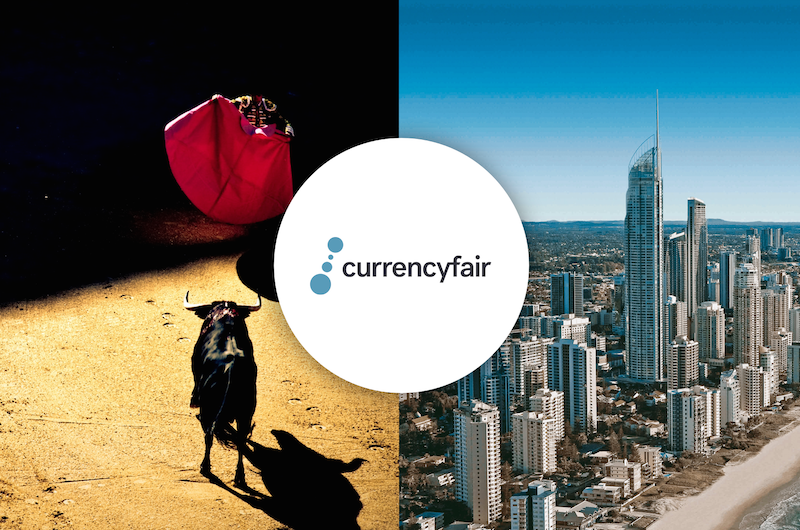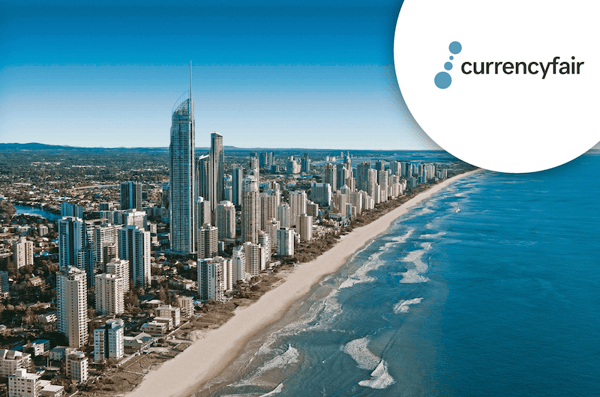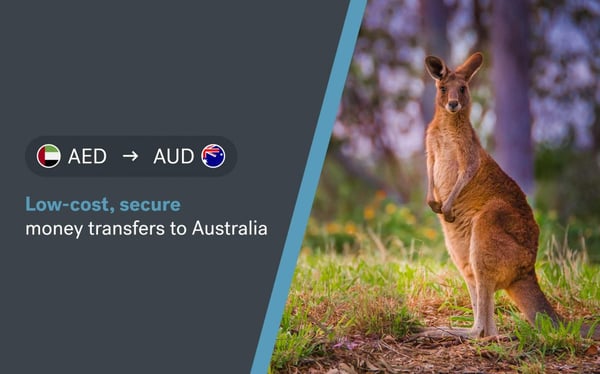People all around the world often harbour the dream of moving to start a new life in Australia. For some, it’s the need to escape a dreary 9 to 5, or a cold climate that makes Australia an expat hub. For others, it is the desire to make a fresh start on a continent known for sun, sand and surf.
In 2018, Australia continues to be an attractive destination for expats from across the globe seeking all the above Down Under, particularly Spain.
According to Expatistan, the cost of living in Australia is 43% more expensive than in Spain. While there is a higher cost of living, a move to Australia will allow you to earn more while exploring the Asia Pacific region. With the average monthly salary in Australia coming in at approximately A$4,209 according to Numbeo, a move Down Under looks very attractive when compared with an average salary of approximately A$2,021 in Spain - an almost 108% increase when working in Australia compared to Spain.
For a Spanish expat living in Australia, we breakdown the cost of living:
Australia versus Spain Cost of Living Survey:
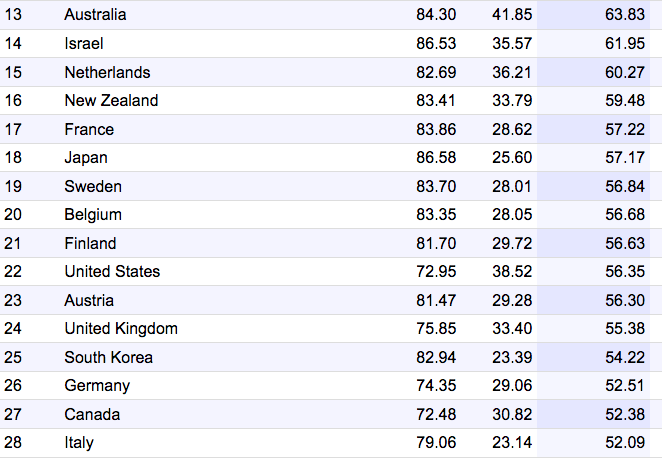
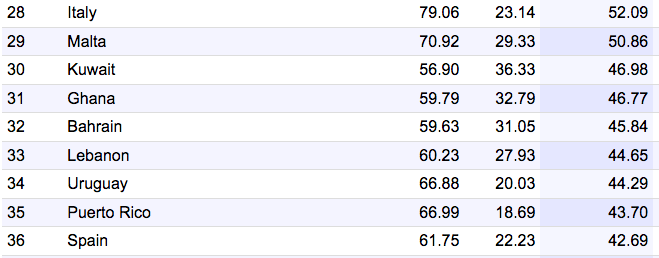
Spain is currently ranked in 36th position in a 2018 Numbeo cost of living survey
Spain had an index of 42.69 for cost of living which is for things like groceries, restaurants, transport costs plus accommodation costs like rent or a mortgage. Australia is ranked in 13th position at 63.83 in the same survey.
Another unit this survey measured was purchasing power in a given city for the average wage. Here Australia was an attractive 122.98 over 100. This indicates that domestic people in Australia can buy almost 23% more goods and services on their salary than the average wage in that country. Compared to Spain, which was ranked with a lower purchasing power of 90.67, indicating an almost 36% increase in purchasing power for anyone moving to Australia from Spain.
Where to live in Australia
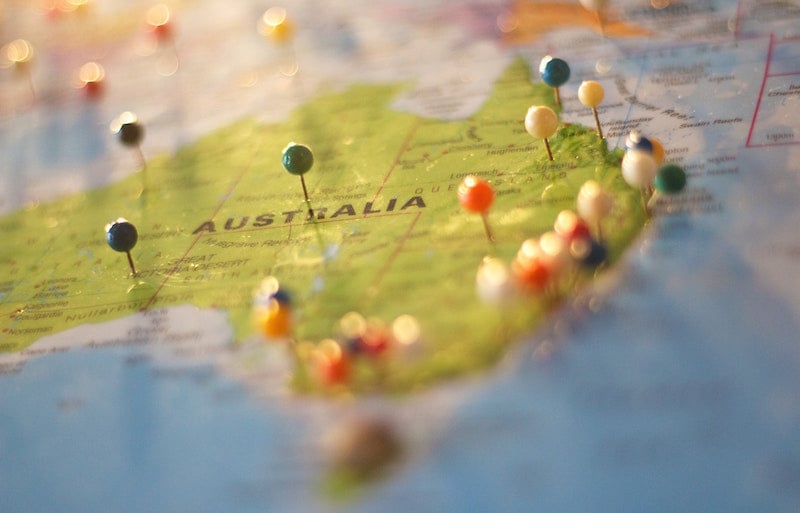
When planning a move to Australia, professional expats are often drawn to the four largest cities - Sydney, Melbourne, Brisbane or Perth.
In 2018 Mercer published a survey that ranked the 39 factors that made a city most desirable to expats. The results ranked the top 21 cities in the world, and the top 5 in each region, based on quality of life.
Three of Australia’s biggest cities were featured in the list for the world’s Top 21 cities - with Perth coming in at number 21, Melbourne at 16 and Sydney at number 10. According to Mercer, the coastal haven of Melbourne is one of the best places in the world for education and health-care, whereas Perth is home to some of the country’s most beautiful beaches. Sydney is a leading centre of finance in Australia, with an attractive cultural scene and some of the country's best restaurants.
However there are neighbourhoods adjacent to these main cities and coastal towns that make equally excellent choices, with a lower cost of living but a similarly high quality of life. CurrencyFair looked at these alternative locations in our article on the best places to live in Australia best places to live in Australia.
How much does property cost in Australia?
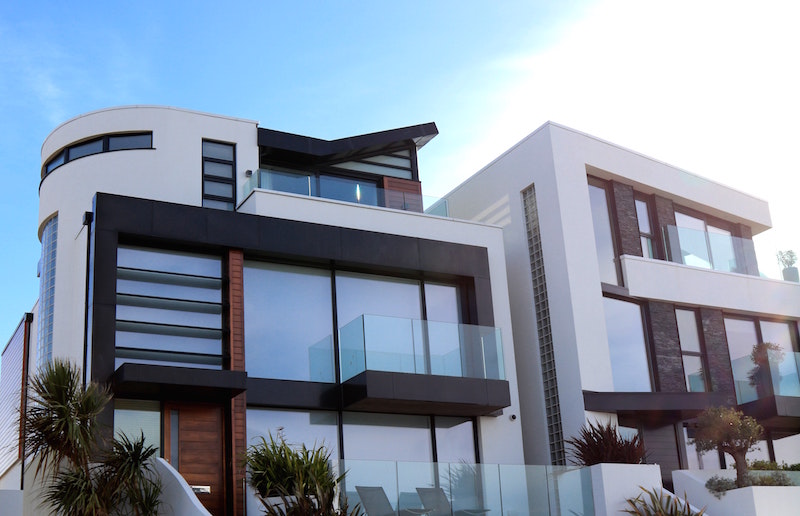
Even if you are earning enough to afford to buy, Australian house prices are on the move.
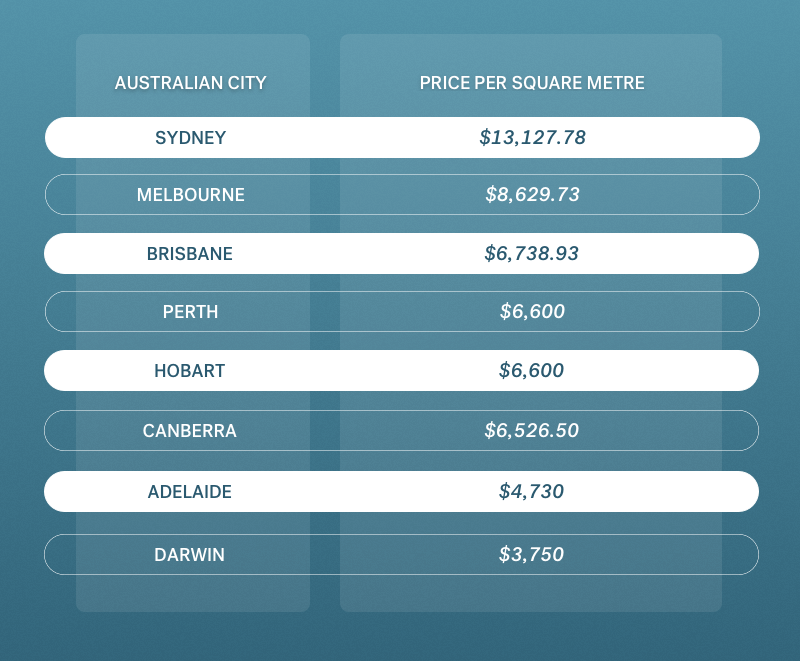
According to globalpropertyguide.com, property in Australia rose by 11.1% in eight of its major cities throughout 2017. Sydney has the most expensive housing in the country, with the mean house price of A$903,700 recorded in the second half of 2017 being about 33% above the national mean house price. In contrast, Tasmania has the cheapest housing in Australia, at a mean price of A$360,400 over the same period.
(However there has been trouble on the horizon for the Australian property market so far in 2018 with prices expected to drop by up to 4% in Melbourne and Sydney.)
For anyone planning on investing long-term in property in any of these locations, check out our complete guide to buying a house in Australia.
It is important to be aware of the details around what type of property you can buy as an expat. Purchasing property is subject to Foreign Investment Review Board (FIRB) approval and you can only buy an unoccupied new dwelling - if the FIRB feels that the purchase will not add to the shortage of properties available to native Australians.
Renting costs in Australia?
If buying is not in your plans, renting is a more affordable option for most expats living in Australia. Once again prices vary from city to city and even within the same neighbourhoods.
According to expatistan.com, it is 24% more expensive to rent in Sydney than in Melbourne:
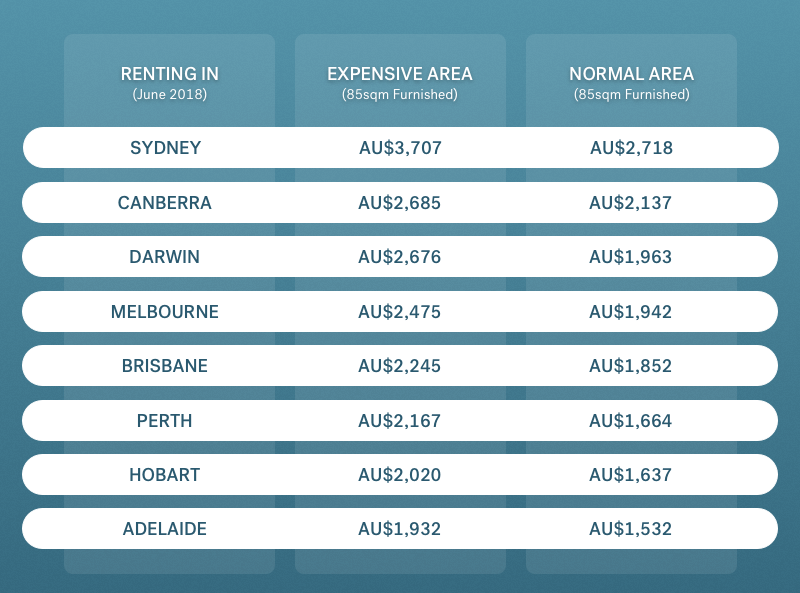
Travel and commuting costs in Australia
When comparing Australian cities for the cost of commuting it is important to calculate into your budget the cost of commuting every month.
You can commute or invest in a car to get around while you are living in Australia.
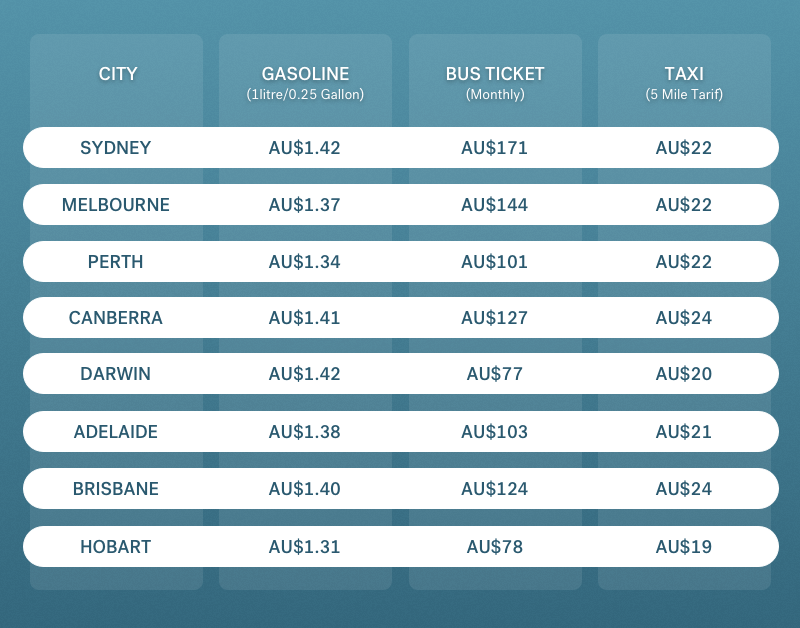
Health and fitness in Australia
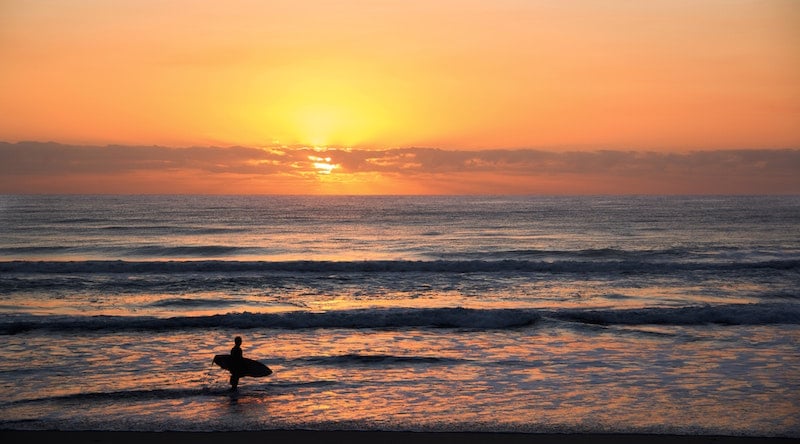
With such great weather to enjoy year round, Australians can make the most of the outdoors after work and on weekends. Australia has a really strong cultural interest in outdoor pursuits like walking, running and cycling. For any chilly days or more likely days where it is too hot to work out under the sun, there is always the gym. Prices for joining a gym range from city to city in Australia, but generally you can enjoy working out indoors for $110 per month in Sydney, $76 in Melbourne and at almost half the cost for just $59 in Perth according to expatistan.com
It is not just working out and fitness that leads to a healthier life in Oz. Australia is sometimes known as the “lucky country” and looking at its life expectancy figures, you would have to agree. Organisation for Economic Co-operation and Development (OECD) data shows the lifespan of both Australian men and women has increased. People born in 2011–2013 are now expected to live to around 33–34 years longer than Australians born between 1880 and 1890.
Life expectancy is on the rise due to the high quality of life, improved living conditions and advancements in the Australian health-care system known as Medicare.
For expats moving to Australia another numbeo index to note is the Health Care Exp Index which shows a health care index such that it raises MORE (exponentially) if the healthcare system is of better quality. Here Australia had a score of 138.78, taking 12th position compared to Spain in 8th place ranking at 142.81.
All this means that for any illness or medical treatment you (hopefully won’t, but) may require while in Australia, you are still in good hands.
Eating in... and out

Another tasty way to enjoy the outdoors in Australia is by dining al fresco in a top restaurant.
As we outlined in our article on how to Adjust to life in Australia as an expat from Spain, Australia has embraced and adopted many elements of Spanish cuisine and food and it is never hard to sample some tasty evidence of this in any of the major Australian cities.
Dinner for two at an Italian restaurant in a typically expat area including appetisers, main course, wine and dessert will cost you $109 in Sydney compared with approx $103 in Perth and $92 in Melbourne. The same meal in Spain would cost you approximately $75 according to Expatistan rankings.
If enjoying a home-cooked meal is more your style, then a decent bottle of red wine to go with it will set you back $17 in Perth, $18 in Melbourne and $20 in Sydney - compared to just $10 in Spain.
The ultimate expat test in any city is the price of a cup of coffee. Your morning cappuccino in an expat area of Perth is $4.82 but slightly cheaper at $4.29 in Sydney and $4.27 in Melbourne and will cost you approximately just over $3 on average in Spain.
(Source: expatistan.com)
Extras costs to consider when moving to Australia
It’s not all work and no play when living in Australia. For a Saturday night at the movies, two tickets will cost you around AU$40 in Sydney compared with the price of $36 in Perth and $38 in Melbourne. So not a drastic difference there if you want to escape into the air conditioning for 2.5 hours.
Is moving to Australia a good idea?
With world-class healthcare, amazing weather and exciting growth in the tech and startup space, Australia will continue to be a top choice for expats worldwide and offer amazing opportunities for anyone living in Spain planning to move to Australia.
If you are ready to move to Australia our Moving to Australia checklist covers all the important factors to make your move Down Under a success.
For when you need to transfer savings to Australia or send money from Australia to Spain, CurrencyFair offer you the support, speed and great exchange rates for your money transfers.
Banks hide their fees in poor exchange rates, often charging as much as 3%-6% in excessive margins. CurrencyFair is around 0.45% away from the interbank rate meaning it's up to 8x cheaper for you to transfer money to and from Australia with CurrencyFair.
CurrencyFair is ideal for expats who need to:
-
Send regular savings home.
-
Relocate and setup expenses.
-
Make mortgage payments and other property expenses.
You get the best available rates for your international money transfers. If you want to request a rate, you can do so in our unique peer-to-peer exchange - request a rate and wait to get matched.
We hope this information will help you in your plans to move from Spain to Australia - now you have some honest tips and advice to make sure you are getting the best start to your move Down Under.
CurrencyFair specialise in being transparent and fair at all times - like when we are sending money overseas.
See how much you can save when using CurrencyFair to send money home from Australia.

